hankyoreh
Links to other country sites 다른 나라 사이트 링크
Japan begins decades-long process of flushing radioactive water into ocean
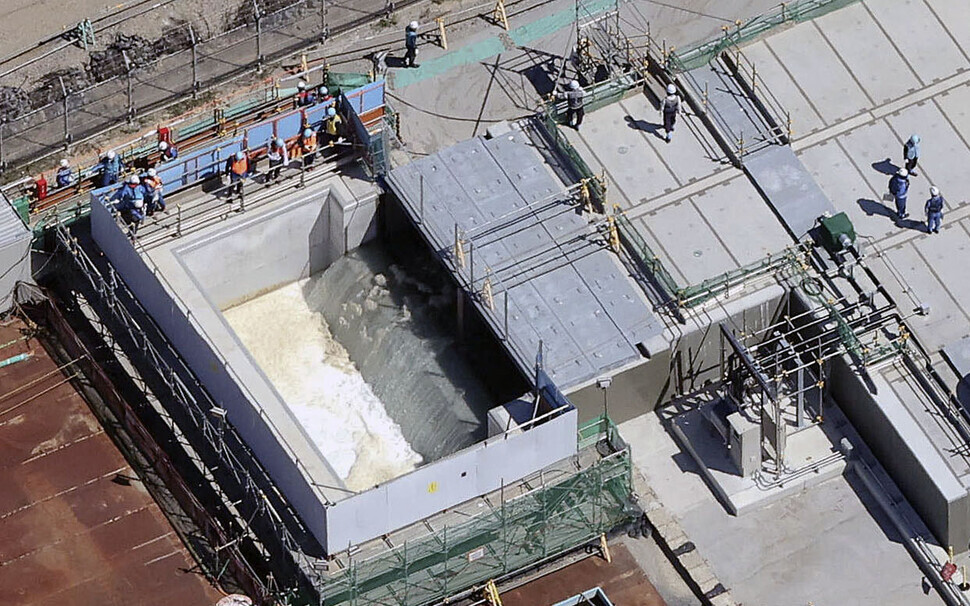
Despite concerns expressed by domestic fishers and those in neighboring countries like South Korea and China, the Japanese government pushed ahead with the release of radioactive wastewater being stored in the Fukushima Daiichi nuclear plant into the ocean, a process anticipated to take over 30 years.
Because of this, seafood consumption is expected to decline drastically in both South Korea and Japan due to concerns regarding its safety. Although, in Japanese Prime Minister Fumio Kishida’s words, Japan promised domestic fishers that it would “take all responsibility and respond” to the outcome of the wastewater discharge, the country has been sitting on its hands when it comes to the damage neighboring countries like South Korea will incur. This appears likely to set off diplomatic issues that could rattle bilateral relations.
On Thursday at 1 pm, the plant’s operator, Tokyo Electric Power Company (TEPCO), began releasing contaminated water treated by the Advanced Liquid Processing System (ALPS) and diluted with ocean water to lower the concentration of radioactive material to below the legal limit into the coastal waters in front of the Fukushima Daiichi nuclear plant through a 1-kilometer-long submarine tunnel.
From this day onward, TEPCO will be dumping 460 metric tons of wastewater per day for 17 days, releasing a total of 7,800 metric tons of contaminated water. This year, 31,200 metric tons of wastewater — or 2.3% of the total wastewater waiting to be dumped — will be flushed into the ocean in four rounds.
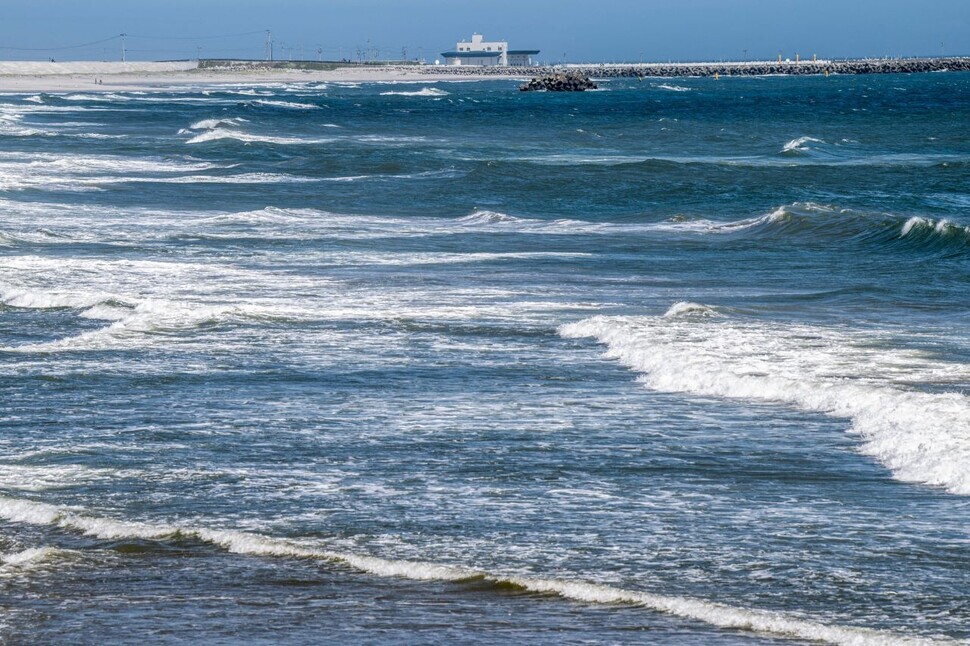
Although two years and four months have passed since April 2021, when the Japanese government officially decided to dump the irradiated water into the ocean, controversy surrounding the water’s safety persists. In order to resolve the matter once and for all, scientists from across the world should collect various samples of the wastewater and analyze how its concentration of radioactive material changes, but Japan has consistently denied South Korea and other relevant countries’ requests to directly collect samples.
The IAEA, which will be inspecting the wastewater discharge process at the release site in Fukushima, revealed that it will share various data concerning the dumping with the South Korean government. Even then, South Korea will have to fully rely on samples collected and analyzed by TEPCO itself for information. World-renowned scientists who set out to verify the safety of the contaminated water along with Pacific island countries have previously criticized data provided by TEPCO as “incomplete” and “biased.”
Independent verification by the South Korean government is also projected to be limited in scope. In its quiet condoning of the release, the Yoon administration’s request to station South Korean experts at the Fukushima Daiichi nuclear plant ultimately did not come to pass. Instead, South Korean experts will be regularly visiting the site of the wastewater discharge. The Japanese government is likely to reveal only information it wants to share on designated dates, just as how inspections of the nuclear plant were run before the dumping began.

The commercial fishing industry in both South Korea and Japan are anticipated to suffer greatly due to the discharge of the wastewater. While claiming the contaminated water is “safe,” the Japanese government came up with a three-step plan to offset declining domestic seafood consumption.
Japan’s Ministry of Economy, Trade and Industry secured 30 billion yen in November 2021 and 50 billion yen the following November for a total of 80 billion yen for fisher assistance. During the first step, the plan will use 30 billion yen to buy seafood products from fishers and store or find new markets for them if consumption of seafood declines due to its deteriorating reputation. In step two, 50 billion yen will be invested into opening new fisheries and training next-generation fishers to ensure the sustainability of the fishing industry in Japan. In step three, TEPCO will directly compensate for damage caused by the wastewater discharge in the industries of fishing, farming, seafood processing, seafood wholesale, and tourism. The company’s policy is to provide long-term compensation of up to 30 and 40 years for damages regardless of location, industry, and time.
South Korean fishers who will incur the exact same damage won’t be able to receive the support Japanese fishers will. During a press briefing for foreign correspondents in Tokyo on Tuesday, a Japanese government official remarked, “The radiation effect of the ocean discharge will be negligible. Neighboring countries will be safe from harm.”
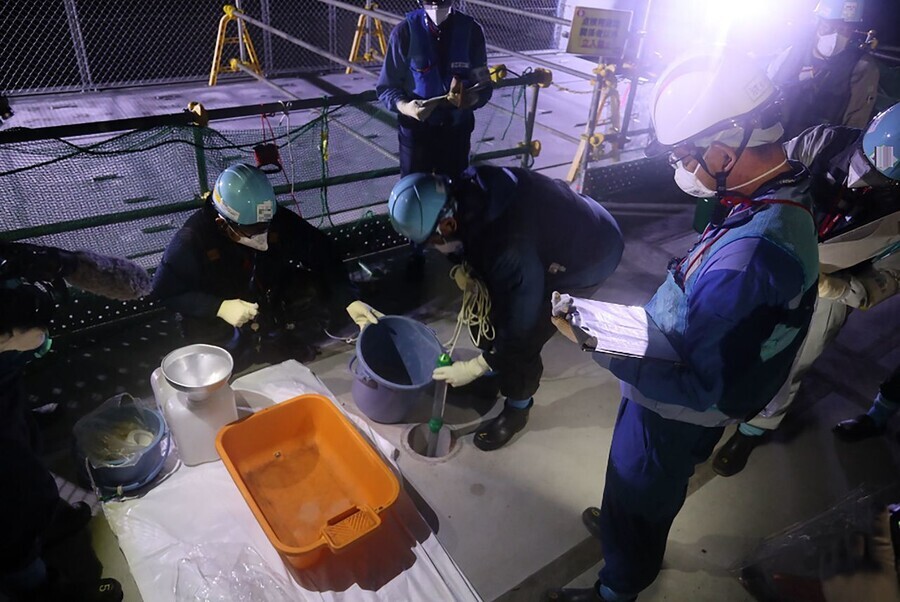
Meanwhile, the Yoon administration has not been able to put even a word in to Japan about the damage Korean fishers will experience.
The South Korean fishing industry projects seafood consumption to fall as low as it did in 2011, when the nuclear meltdown in Fukushima occurred, and in 2013, when the Japanese government admitted that radioactive wastewater was leaking from the accident site. Domestic seafood consumption is estimated to have nosedived by 40% at the time.
The government has increased its budget for preventing decreases in seafood consumption by 100 billion won (US$75 million) this year compared to last year.
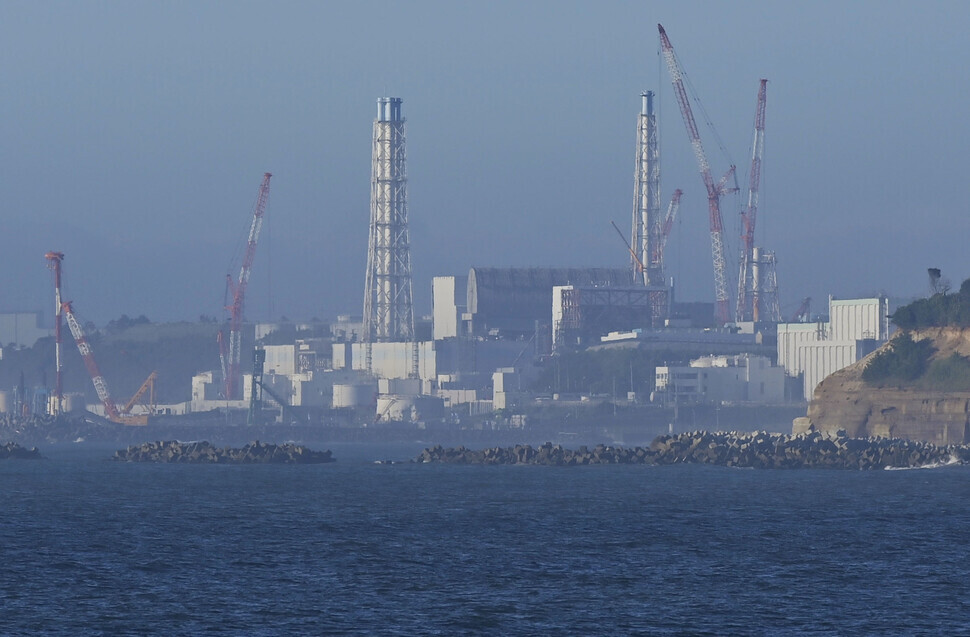
Prime Minister Han Duck-soo released a statement regarding how South Korea plans to respond to the discharge of wastewater from Fukushima at the government complex in Seoul. He said, “We will carry out various support measures to protect our fishing industry,” adding, “Assistance for fishers will be more than doubled next year compared to this year.”
Next year’s budget for fisher assistance is projected to amount to around 500 billion won.
Han continued, “Import controls on Japanese seafood products will be firmly maintained.”
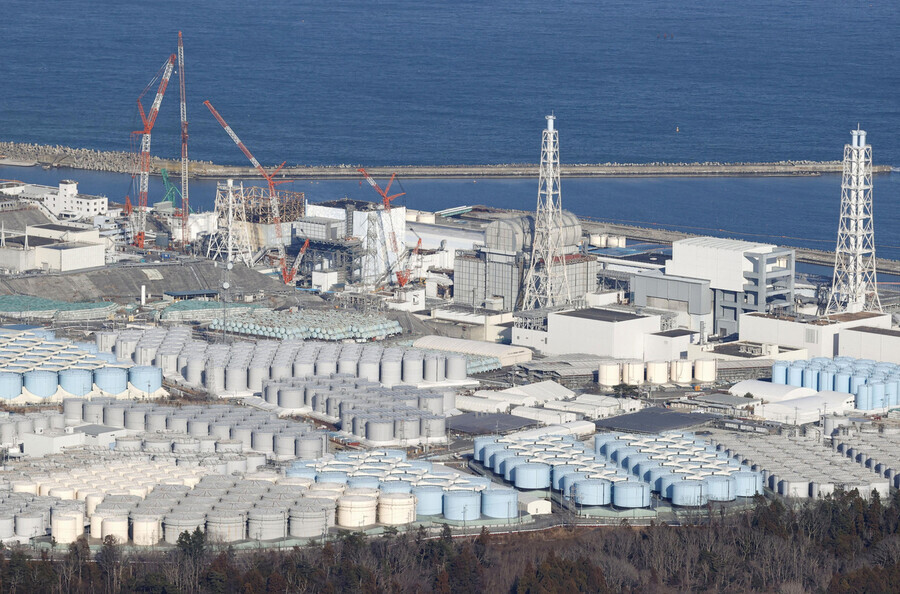
By Kim So-youn, Tokyo correspondent
Please direct questions or comments to [english@hani.co.kr]

Editorial・opinion
![[Column] Tariffs on China: Trump was dumb, Biden dumber [Column] Tariffs on China: Trump was dumb, Biden dumber](https://flexible.img.hani.co.kr/flexible/normal/500/300/imgdb/original/2024/0520/191716191153918.jpg) [Column] Tariffs on China: Trump was dumb, Biden dumber
[Column] Tariffs on China: Trump was dumb, Biden dumber![[Column] What if Seoul took reunification by force off the table? [Column] What if Seoul took reunification by force off the table?](https://flexible.img.hani.co.kr/flexible/normal/500/300/imgdb/original/2024/0520/3017161928630494.jpg) [Column] What if Seoul took reunification by force off the table?
[Column] What if Seoul took reunification by force off the table?- [Editorial] Intensifying US-China rivalry means Seoul must address uncertainty with Beijing sooner than later
- [Column] When ‘fairness’ means hate and violence
- [Editorial] Yoon must stop abusing authority to shield himself from investigation
- [Column] US troop withdrawal from Korea could be the Acheson Line all over
- [Column] How to win back readers who’ve turned to YouTube for news
- [Column] Welcome to the president’s pity party
- [Editorial] Korea must respond firmly to Japan’s attempt to usurp Line
- [Editorial] Transfers of prosecutors investigating Korea’s first lady send chilling message
Most viewed articles
- 1Xi, Putin ‘oppose acts of military intimidation’ against N. Korea by US in joint statement
- 2For new generation of Chinese artists, discontent is disobedience
- 3Kim Jong-un wanted to meet with residents of shelled Yeonpyeong Island in South, Moon recalls in mem
- 4To weigh costs and benefits, Korea must stop treating US troop presence as a sacred cow
- 5[Column] What if Seoul took reunification by force off the table?
- 6[Exclusive] Unearthed memo suggests Gwangju Uprising missing may have been cremated
- 7[Editorial] Transfers of prosecutors investigating Korea’s first lady send chilling message
- 8[Editorial] Intensifying US-China rivalry means Seoul must address uncertainty with Beijing sooner t
- 9Berlin mayor hints at tearing down ‘comfort women’ memorial in city
- 10How K-pop broke the internet — and broke into the US market